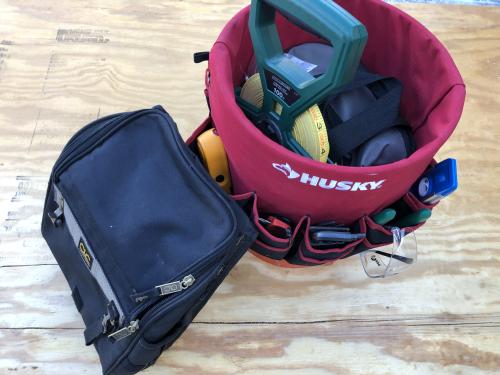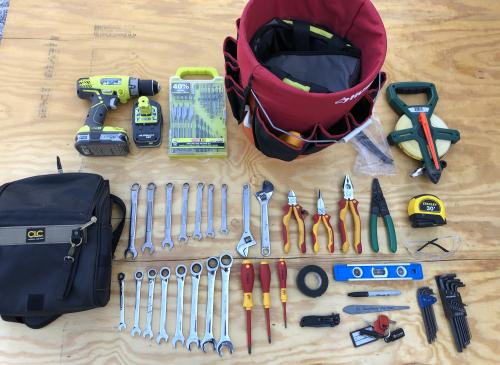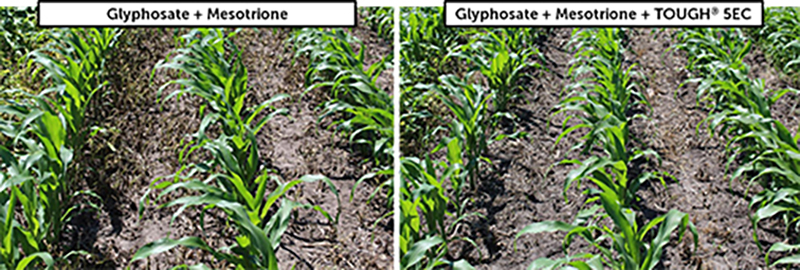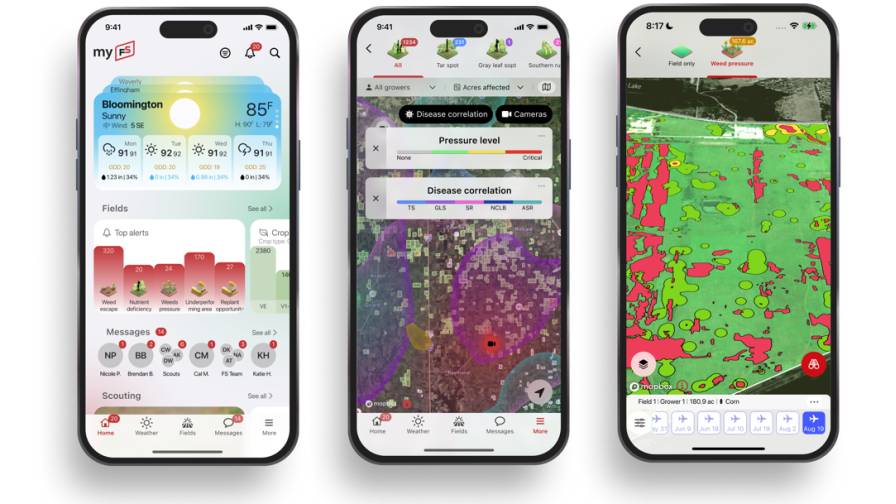What’s in Your Precision Ag Tool Bag?
Precision agriculture is a hands-on industry. This is what attracted me to a career in this area, and I’m sure I’m not alone. For those like me who actively work with the latest equipment and technology, using tools is a regular part of the job. Nothing is worse than driving out to a farm, field, or piece of equipment and discovering that you don’t have what you need. Through some trial and error, I have found the most common tools and equipment that cover around 95% of the work I do in precision agriculture.

A 5-gallon bucket with a tool bag keeps tools organized and accessible, while an electrician’s tool pouch with shoulder straps are built to withstand tough field conditions.
The Tool Bag, Box, or Bucket
The actual method you use to carry your tools is highly personal, and there’s no right or wrong answer. For me, I’ve found that I prefer to use a standard 5-gallon bucket with a tool bag. This method has the primary benefit of being inexpensive and easy to replace if something gets damaged. However, the biggest reasons that I prefer this for carrying most of my tools is because the tools remain accessible, organized, and easy to find. I keep my tool bucket inside my vehicle, which keeps them out of the weather and away from prying eyes.
When it comes to actually working on equipment or walking through a field, carrying around a heavy bucket of tools often isn’t practical. In these situations, I load a small tool bag with the select tools I need for the job. I prefer electrician tool bags, because they typically have shoulder straps and are built to withstand tough conditions. My most recent tool bag was from Amazon, and I couldn’t be happier with the purchase.

These tools are most commonly used in precision agriculture.
The Tools
The tools you need may vary slightly depending on your specific area of precision agriculture. This list includes the tools that I’ve found myself using on a regular basis. These are not in any specific order of importance and are grouped together by similar uses.
Hand Tools
- Pocket knife
- Screwdrivers, flat-head and Phillips-head
- Combination wrenches, both metric and standard
- Crescent wrenches, I usually carry two
- Pliers, combination and needlenose
- Diagonal cutters
- Wire strippers
- Allen keys, both metric and standard
Electronics
- 18-20v cordless drill with bits: in addition to drilling the occasional hole, I regularly use this for installing soil moisture sensors, such as the Sentek Drill & Drop.
- USB flash drives: a large part of our job involves working with displays and data. While many of these are migrating to wireless data transfer, there are still a few holdouts, and updating software often involves manually loading using a USB.
- Digital multimeter: it’s often necessary to diagnose electronics, and while I’m certainly no expert, a digital multimeter has proven essential to verifying whether something has power and the amount of voltage that is present.
- Wire nuts: whether used during an installation or repair, it’s often necessary to connect wires so I always keep a handful of wire nuts on-hand.
- Electrical tape: in addition to insulating wires, electrical tape has proven useful for other things as well, such as sealing moisture out of holes and electronics.
Agronomic Tools
- Surveying measuring tape: used for things such as stand counting, laying out field trials, and other tasks where having a long tape on the ground is necessary.
- Retractable tape measure: used for measuring the height and offsets of equipment or other similar tasks.
- Flags and marking tape: helpful for marking plots or trouble areas in the field.
- Seed depth tool digger and indicator: essential for ensuring that planters are set up correctly, such as planting seed at the correct depth and with appropriate spacing.
- Magnetic level: useful for checking levelness of toolbars or other equipment.
Miscellaneous
- Gloves: protecting your hands, whether from temperature extremes (cold or hot) or mechanical abrasion is important. I usually have two pairs of gloves in my tool bucket, a pair of thicker, insulated gloves for use in cold weather and a pair of lightweight gloves that allow for manual dexterity and still protect against cuts or touching a hot piece of metal.
- Tractor keys: let’s face it, farmers are busy and often aren’t with a piece of equipment that needs worked on. Having spare keys for tractors, sprayers, and combines so that you can troubleshoot a piece of equipment, install hardware, or transfer data is a must.
- Zip ties: having zip ties in your tool collection goes without saying. I use zip ties on nearly a daily basis and consider them an essential tool to have on-hand.
- Permanent marker: again, another essential tool which I use almost every day.
What do you have in your tool bag? Are there tools not on my list that you can’t live without? Feel free to share your thoughts on my tool kit or how you’ve built your own tool bag, box, or bucket in the comments section below.






